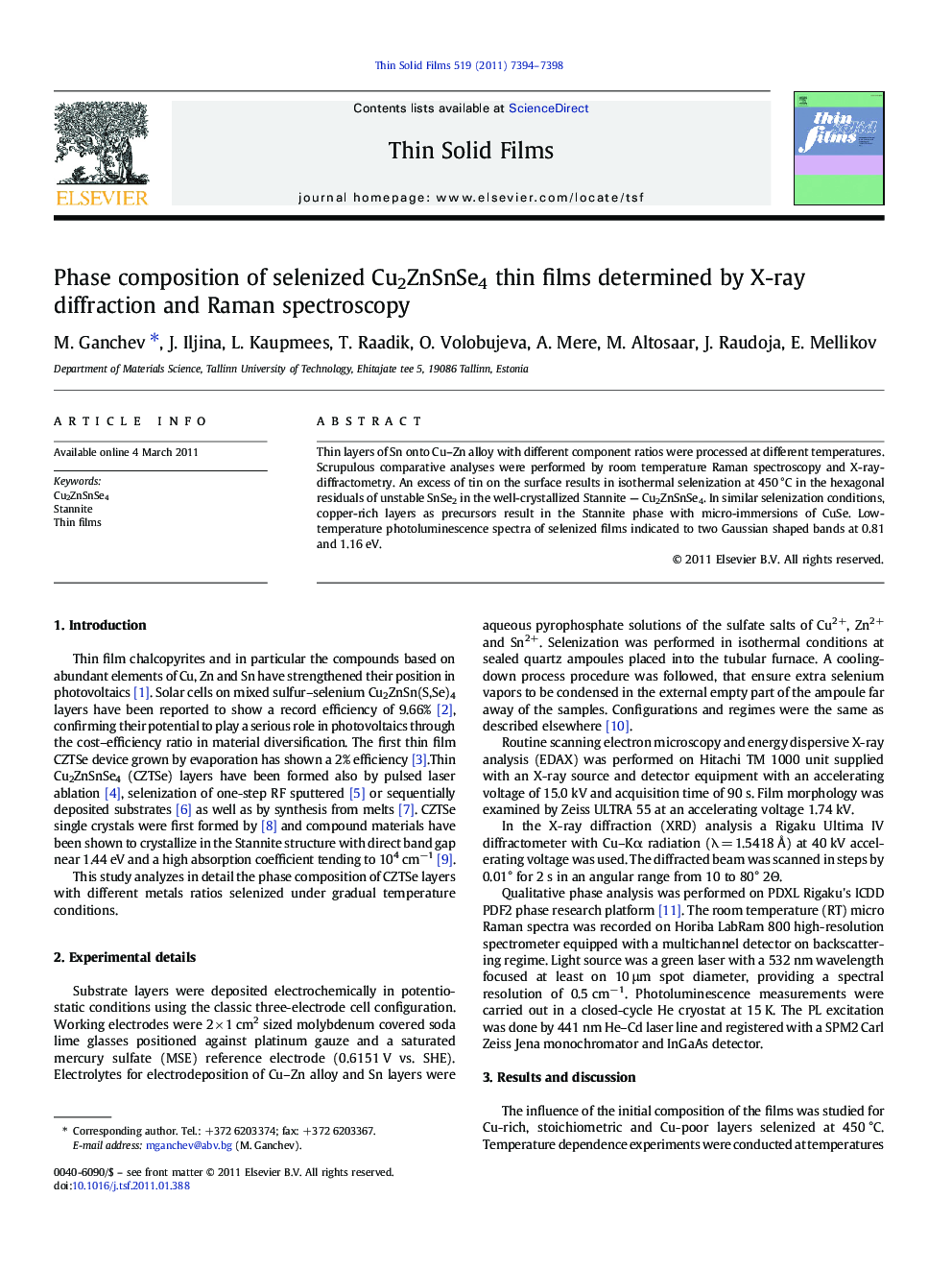| Article ID | Journal | Published Year | Pages | File Type |
|---|---|---|---|---|
| 1669032 | Thin Solid Films | 2011 | 5 Pages |
Abstract
Thin layers of Sn onto Cu–Zn alloy with different component ratios were processed at different temperatures. Scrupulous comparative analyses were performed by room temperature Raman spectroscopy and X-ray-diffractometry. An excess of tin on the surface results in isothermal selenization at 450 °C in the hexagonal residuals of unstable SnSe2 in the well-crystallized Stannite — Cu2ZnSnSe4. In similar selenization conditions, copper-rich layers as precursors result in the Stannite phase with micro-immersions of CuSe. Low-temperature photoluminescence spectra of selenized films indicated to two Gaussian shaped bands at 0.81 and 1.16 eV.
Keywords
Related Topics
Physical Sciences and Engineering
Materials Science
Nanotechnology
Authors
M. Ganchev, J. Iljina, L. Kaupmees, T. Raadik, O. Volobujeva, A. Mere, M. Altosaar, J. Raudoja, E. Mellikov,
